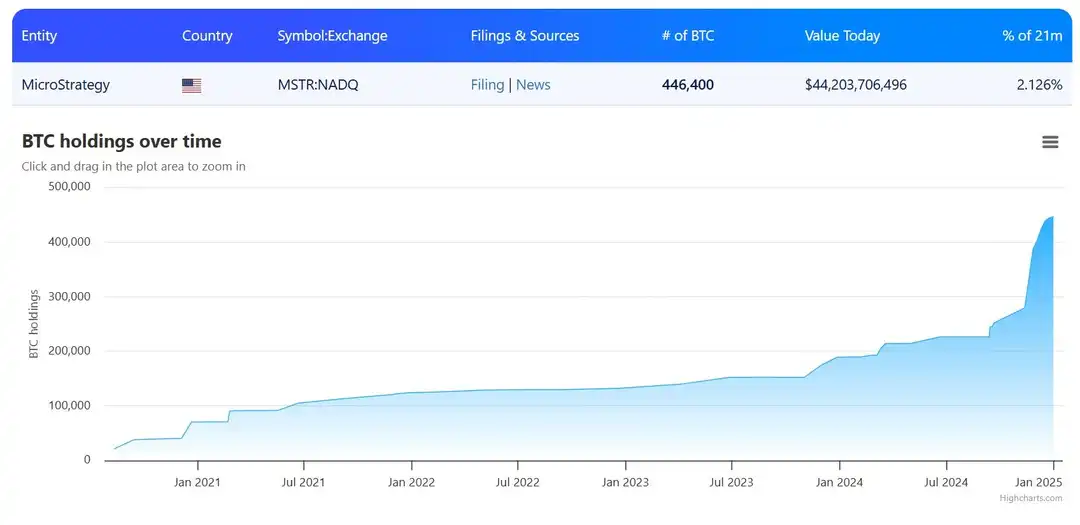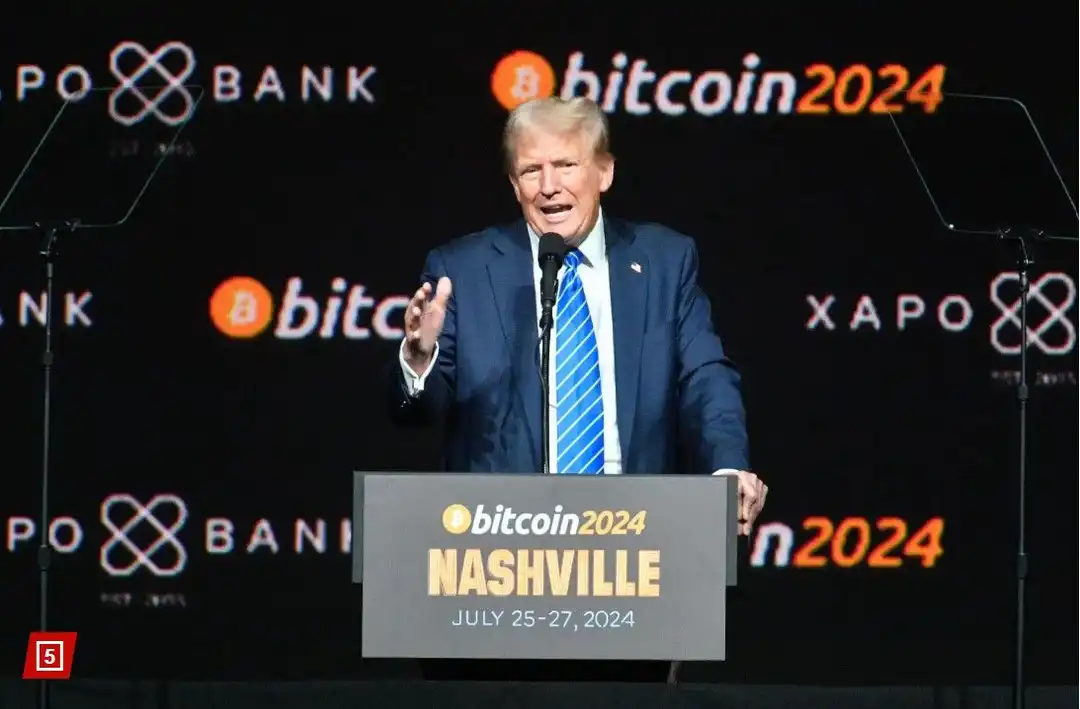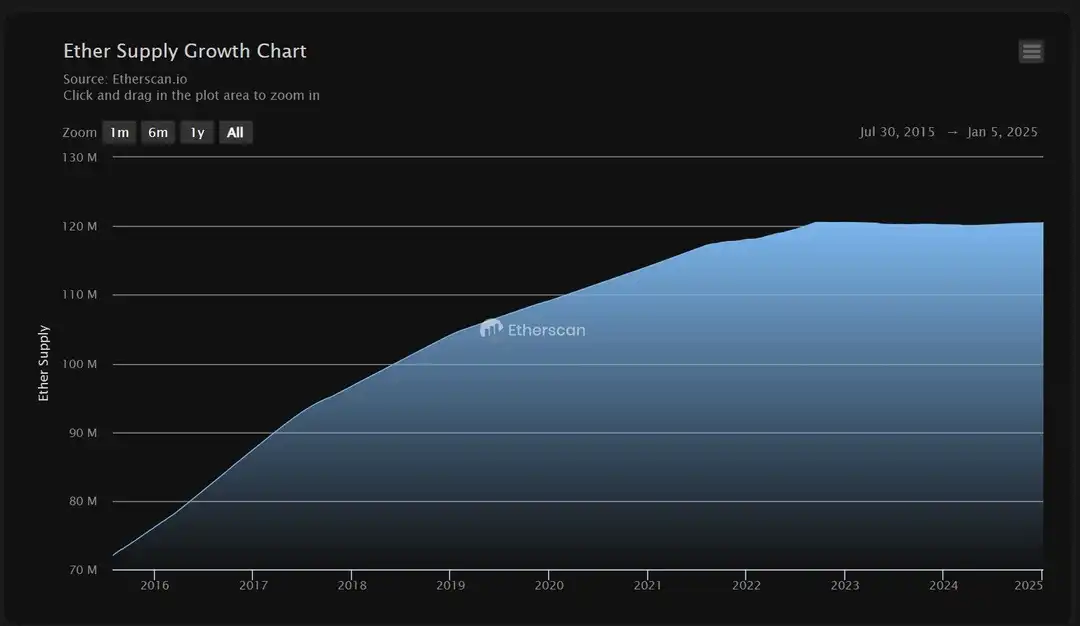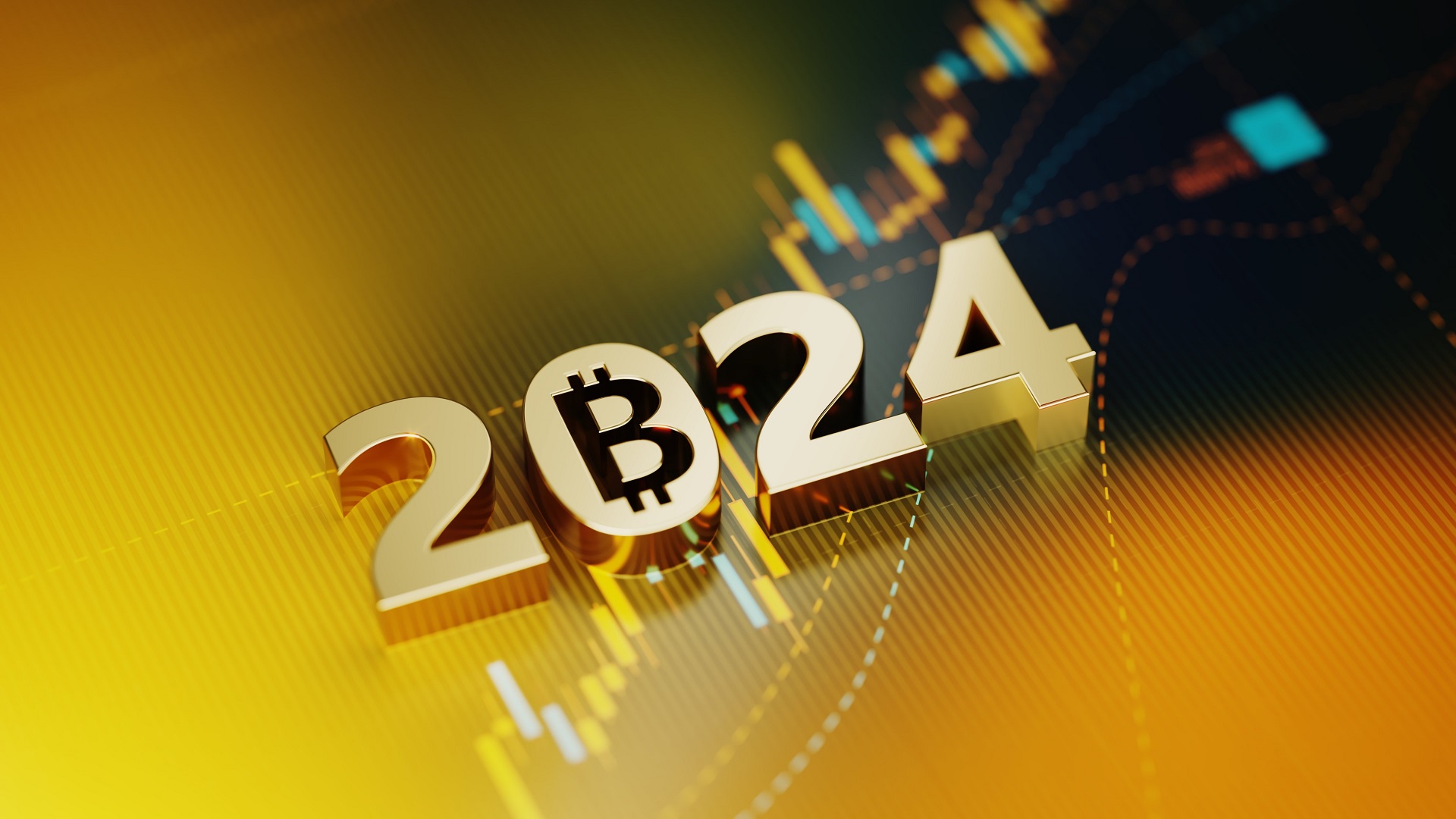Ready to start your Bitcoin journey? Sign up for OKX, Binance, or Bitget today and take your first step into the world of cryptocurrency!
OKX:https://okx.com/join/8798539
Binance:https://accounts.binance.com/register?ref=1031203493
The year 2024 proved to be a tumultuous yet ultimately fruitful period for the cryptocurrency sector, characterized by volatility and surprising developments. Despite the inherent unpredictability, the year concluded on a remarkably positive note across numerous fronts.
From Bitcoin exceeding the $100,000 milestone following the green light for spot Exchange-Traded Funds (ETFs) from major financial players such as BlackRock and Fidelity, to the European Union establishing a guiding regulatory principle with its MiCA framework, the year was replete with landmark occurrences that redefined the market landscape. Furthermore, 2024 was a period of significant innovation, witnessing the emergence of AI agents and advancements in chain abstraction, hinting at a promising trajectory for blockchain technology.
This piece revisits the defining moments of 2024, utilizing the benefit of hindsight to glean valuable insights. By reflecting on these significant events, our aim is to equip readers with the understanding necessary to navigate the opportunities and challenges that lie ahead in the coming year.
Crypto’s Power Dynamic: Institutions Take the Lead, Regulations Provide Fuel
In 2024, the cryptocurrency market underwent a fundamental shift in power, with institutional participants assuming a central role, propelling unprecedented expansion and legitimacy. Concurrently, the environment evolved as prominent adversaries stepped aside, clearing the path for novel prospects and ambitious commitments.
Institutional Dominance Redefines the Market
The year 2024 witnessed a significant power shift within the cryptocurrency sphere as institutional players moved to the forefront, spearheading unparalleled expansion and bolstering the industry’s credibility.
Bitcoin Spot ETF Approvals
A watershed moment arrived with the U.S. Securities and Exchange Commission’s (SEC) authorization of spot Bitcoin ETFs. Leading financial firms like BlackRock and Fidelity launched these ETFs, offering conventional investors a supervised route to gain exposure to Bitcoin. This advancement pushed Bitcoin’s value beyond $60,000, setting the stage for the asset to break the $100,000 barrier post-elections, reflecting amplified market confidence and mainstream acknowledgement.
Significant Bitcoin Acquisitions
Under the leadership of Michael Saylor, MicroStrategy sustained its aggressive Bitcoin accumulation strategy. By December 2024, the company possessed roughly 446,400 BTC, secured at an average cost of $58,219 per Bitcoin, totaling an investment exceeding $23 billion. Notably, in November 2024, MicroStrategy acquired 27,200 Bitcoins for approximately $2.03 billion, highlighting its steadfast dedication to Bitcoin as a primary treasury asset.

MicroStrategy’s BTC Holdings Growth | Image via bitbo
Tokenization of Real-World Assets
The process of tokenizing real-world assets (RWAs) gained considerable traction, bridging the gap between traditional finance and blockchain technology. Institutions such as Goldman Sachs and HSBC developed platforms to tokenize securities, funds, and bonds, improving both liquidity and accessibility. This trend signals a wider acceptance of blockchain’s capacity to revolutionize financial markets.
Obvious Headwinds Subside, Yet the Path Remains Long
The cryptocurrency landscape in 2024 experienced notable alterations, with opponents receding and fresh promises appearing on the horizon.
Gary Gensler’s Departure
Gary Gensler, the SEC chairman known for his firm and rigorous approach to crypto regulation, announced his resignation, effective January 20, 2025, coinciding with the inauguration of President-elect Donald Trump.
The crypto community expressed enthusiasm, hoping his departure would usher in a more permissive regulatory climate. However, his exit also created a regulatory gap, leading to uncertainty regarding his successor and their prospective approach.

Gary Gesler Steps Down as SEC chair | Image via The Banker
Trump’s Election Victory
Donald Trump’s return to the White House sent waves through the crypto markets. His campaign pledges to establish the U.S. as the “crypto capital of the planet” and to create a national Bitcoin reserve fueled market optimism.

Trump Talking About a Bitcoin National Reserve at Bitcoin Nashville 2024 | Image via New York Post
Bitcoin’s price experienced an upswing, mirroring the positive market sentiment. Nevertheless, as of early January 2025, these assurances remain just that—assurances. The crypto world is watching intently, awaiting tangible policy implementations once Trump assumes office.
Global Regulatory Drive
Across the Atlantic, the European Union made significant progress with the Markets in Crypto-Assets (MiCA) regulation, which fully came into force on December 30, 2024.
MiCA offers an extensive structure for crypto assets and aims to harmonize regulations across its member states. This initiative has been praised for providing clarity and encouraging investment within the EU, positioning Europe as a significant player in the global crypto arena.
Conclusion
The latter part of 2024 set the stage for a transformative phase in crypto regulation. With strict regulators stepping down and leaders supportive of crypto taking their place, the industry stands at a pivotal point. However, the journey from promises to policy is laden with ambiguity. As Trump prepares to assume his presidential duties, the crypto community remains in suspense, eager to see if the anticipated regulatory clarity and support will materialize. Until that point, the future path remains uncertain, presenting both opportunities and challenges.
Market Dynamics Illustrate a Maturing Ecosystem
In 2024, the cryptocurrency market demonstrated its evolution, with volatility becoming a defining characteristic of its increased maturity.
Significant Price Fluctuations
Bitcoin’s journey was marked by considerable ups and downs. The U.S. Securities and Exchange Commission’s approval of 11 spot Bitcoin ETFs in January 2024 sparked a rally, pushing prices to a multi-year peak of $49,102. However, this exuberance was tempered by an 18% decline to $40,236, highlighting the market’s vulnerability to regulatory announcements.
The political sphere further contributed to the fluctuations. Donald Trump’s electoral victory and his pro-crypto stance, including commitments to make the U.S. the “crypto capital of the planet,” injected optimism, propelling Bitcoin beyond the $100,000 mark. Yet, the market remained cautious, awaiting concrete policy actions.
Underwhelming Performance of Ethereum
Ethereum encountered its own set of hurdles. The growth of Layer 2 solutions, intended to improve scalability and decrease transaction fees, led to a substantial migration of transactions away from the main network. This shift resulted in gas fees plummeting to their lowest level in five years, averaging around $0.14 per transaction. While this eased congestion, it also indicated reduced demand for Ethereum’s native gas tokens, raising questions about the platform’s long-term value proposition.

Ether supply has not deflated ever | Image via etherscan
Conclusion
The events of 2024 underscore a cryptocurrency market that is both developing and intrinsically linked to external influences. The significant price swings, influenced by regulatory approvals and political developments, demonstrate that volatility is now an inherent trait of this evolving ecosystem.
Notably, the post-election surge following Trump’s victory and SEC Chair Gary Gensler’s resignation were among the most positive events in recent years. However, speculators should proceed with caution; misjudging market peaks can lead to substantial losses even during bullish periods. Ethereum’s experience emphasizes the market’s relentless pursuit of scalability, even if it means diminishing the role of core elements like gas tokens.
Technology Guides the Future Path
In 2024, the crypto landscape was dominated by narratives emphasizing chain abstraction and enhanced user experiences, indicating a move towards more integrated and user-friendly ecosystems.
Multichain Ecosystems
Emerging Layer 1 projects such as Sui, Cosmos, Polkadot, and Solana highlighted the industry’s pursuit of blockchain interoperability. Sui, for example, reported an average transaction fee of $0.011 in 2024, making it 600% less expensive than Solana and over 86,000% less expensive than Ethereum. This underscores its scalability and cost-effectiveness.
Chain Abstraction
Chain abstraction made notable advancements in unifying Ethereum’s fragmented rollup ecosystem. Omni’s launch of its Core mainnet aimed to address challenges in cross-chain communication, introducing a universal gas resource to enable faster and more cost-effective transactions throughout the Ethereum ecosystem.
AI Integration in Crypto
The convergence of AI and blockchain was exemplified by projects like Virtuals Protocol, which facilitated the creation of tokenized AI agents. Launched on Ethereum’s Layer 2 Base network, Virtuals Protocol empowered users to create, monetize, and scale AI agents, contributing to its market capitalization surge to over $1.6 billion.
Furthermore, AI-driven meme coins such as Goatseus Maximus (GOAT) gained traction. GOAT’s market cap reached approximately $268 million, showcasing the viral potential of AI-agent interactions within the crypto space.

GOAT is the First AI to Become a Millionaire | Image via X
Conclusion
The technological advancements of 2024 underscore the crypto ecosystem’s dedication to enhancing user experience through interoperability and abstraction. While innovations like AI integration offer substantial growth potential, they are often in their early stages, contributing to market volatility. Investors should approach these emerging narratives cautiously, acknowledging both the opportunities and inherent risks associated with early-stage technologies.
Wider Applications Highlight Adoption Potential
In 2024, blockchain technology demonstrated its adaptability, driving real-world adoption and attracting significant investment across diverse sectors.
Tokenization of Real-World Assets
The tokenization of tangible assets gained momentum, enabling fractional ownership and improving liquidity.
Decentralized Social Media
Amid growing concerns regarding data privacy and centralized control, decentralized social networks experienced an increase in user adoption. Platforms like Farcaster and Bluesky offered users greater control over their data and content, fostering communities that prioritized user privacy and resisted censorship.

Farcaster is a Popular Decentralized Social Media Platform | Image via medium
The Resurgence of GameFi and Metaverse Projects
The GameFi sector experienced a revival, with projects integrating NFTs and virtual economies to enhance user engagement. Improved user experiences and innovative gameplay mechanics attracted a new wave of participants, reaffirming the relevance of blockchain-based gaming and virtual worlds in the evolving digital landscape.
Conclusion
The developments of 2024 highlight blockchain technology’s expanding role across various industries. The tokenization of real-world assets bridges traditional finance and crypto, providing new investment avenues. Decentralized social media platforms empower users with greater control over their online presence.
The resurgence of GameFi and metaverse projects highlights the ongoing relevance and potential of virtual economies. However, while these applications present significant opportunities, they are still in their initial phases, contributing to market volatility. Investors and participants should remain aware of the nascent nature of these technologies and the associated risks.
Emergence of AI and Crypto Integration: AI Agents
In 2024, the fusion of artificial intelligence (AI) and blockchain technology led to the emergence of AI agents—self-operating software programs functioning on decentralized networks. These agents utilize smart contracts and AI to execute tasks without human involvement, signaling a new era of automation and decentralization.
What Are AI Agents?
AI agents are autonomous entities that carry out complex operations on blockchain platforms. By integrating AI algorithms with smart contracts, they can process vast amounts of data, make informed decisions, and execute actions independently. This synergy enables applications ranging from automated trading to decentralized governance.

Eliza is an AI Agent That Uses Animated Characters to Humanize the Software | Image via Eliza
Significance in 2024
In 2024, AI agents became a central point for innovation. Projects such as Fetch.ai, ai16z, and VIRTUAL explored their potential in various domains, including trading algorithms, supply chain management, and personalized financial services. The AI agent sector’s market capitalization surged to $12.5 billion, reflecting increasing investor interest.
Key Use Cases
- Data Analysis and Decision-Making: AI agents processed extensive datasets to optimize operations, such as portfolio management in decentralized finance (DeFi).
- Decentralized Automation: They facilitated automation in decentralized governance, logistics, and even AI-driven decentralized autonomous organizations (DAOs).
- Blockchain Security: AI agents assisted in identifying vulnerabilities and enhancing smart contract security.
Challenges
- Regulation and Ethical Concerns: The combination of autonomous AI and decentralized systems raised questions about accountability and regulatory oversight.
- Technical Integration: Achieving seamless integration of AI capabilities with blockchain infrastructure remains an ongoing challenge.
Takeaway
The emergence of AI agents in 2024 demonstrated the transformative potential of combining blockchain’s decentralization with AI’s intelligence. This integration paved the way for new applications, redefining efficiency across various sectors. However, the nascent nature of these technologies contributes to market volatility. Investors should approach this space cautiously, acknowledging both the opportunities and inherent risks. For more details on AI agents, check Coin Bureau’s analysis.
Key Learnings from 2024 and Final Thoughts
The cryptocurrency landscape in 2024 was transformative, providing substantial insights into the development of blockchain technology, market forces, and adoption patterns. From institutional dominance to the rise of AI agents, each event highlighted the increasing maturity and complexity of the ecosystem. Here’s what we can learn from the key developments:
Institutional Leadership Reshapes the Market
Institutional players such as BlackRock and MicroStrategy propelled the market’s resurgence, demonstrating the growing acceptance of crypto as a recognized asset category. Bitcoin ETFs brought unprecedented legitimacy, while significant institutional acquisitions emphasized the shift from a market driven by retail investors to one led by institutions. This highlights the influence of “large capital” in shaping market trends and reinforcing Bitcoin’s position as a store of value.
Easing of Regulatory Pressure, but the Future Remains Undefined
While Gary Gensler’s departure and Trump’s pro-crypto stance brought about optimism, definitive regulatory clarity remains elusive. Global frameworks like the EU’s MiCA provided a robust foundation. Nevertheless, the U.S. has yet to establish concrete regulations, teaching us that while adversaries may step aside, promises require tangible action to sustain market growth.

Market Dynamics Illustrate a Progressing Ecosystem
Once perceived as a weakness, volatility has become an intrinsic market characteristic. Price movements influenced by external factors such as macroeconomic events and political developments reflect a maturing ecosystem. However, Ethereum’s challenges with Layer 2 adoption remind us that innovation often brings unforeseen consequences, such as reduced demand for foundational assets.
Technological Advancement Guides the Future
The emergence of chain abstraction solutions, multichain ecosystems, and AI integration underscored the drive for scalability and seamless user interactions. While these advancements are promising, they are still in their initial phases, requiring patience and adaptability from both investors and developers.
Wider Utility Highlights Adoption Capacity
The tokenization of real-world assets, decentralized social media, and the resurgence of GameFi demonstrated blockchain’s utility beyond mere speculation. These trends illustrated that practical applications drive broader adoption, although they often encounter technical and regulatory hurdles in their early stages.
Emergence of AI and Crypto Integration: AI Agents
AI agents demonstrated the transformative capacity of combining decentralization with AI intelligence. Their application in automation, governance, and security highlights blockchain’s potential to revolutionize various industries. Yet, their development raises ethical and regulatory considerations, requiring careful navigation.
Final Thoughts
The events of 2024 demonstrated that the cryptocurrency market is not merely surviving but thriving as it progresses. Each lesson points towards an ecosystem that is maturing, diversifying, and increasingly interconnected with the wider financial and technological landscape. As investors and enthusiasts, remaining informed and adaptable will be crucial for navigating the opportunities and challenges that lie ahead.
Ready to start your Bitcoin journey? Sign up for OKX, Binance, or Bitget today and take your first step into the world of cryptocurrency!




